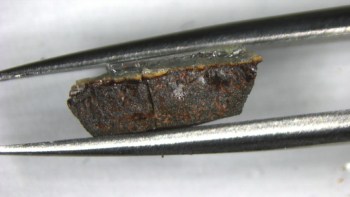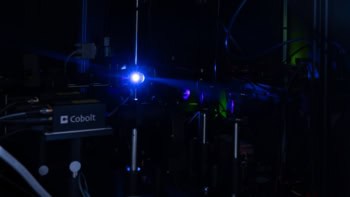
A new type of metallic state of matter has been discovered by an international team of researchers studying a superconductor made from carbon-60 molecules or “buckyballs”. The team found the new state after changing the distance between neighbouring buckyballs by doping the material with rubidium. The study reveals that the material has a rich combination of insulating, magnetic, metallic and superconducting phases – including the hitherto unknown state, which the researchers have dub a “Jahn–Teller metal”.
Led by Kosmas Prassides of Tohoku University in Japan, the study provides important clues about how the interplay between the electronic structure of the molecules and their spacing within the lattice can strengthen interactions between electrons that cause superconductivity. As well as providing further insights into superconductivity, the research could result in the development of new molecular materials that are superconductors at even higher temperatures.
Superconductors are a large and diverse group of materials that offer zero resistance to electrical currents when cooled below a critical temperature (TC). While superconductivity involves conduction electrons forming pairs, the mechanism by which this occurs is not fully understood in all types of superconductors – especially in high-temperature materials.
Adjusting molecules
Superconducting lattices of fullerides – C60 plus three alkali-metal atoms – have been studied for more than two decades, and provide an interesting test bed. This is because the distance between fulleride molecules – and hence the electronic properties of the material – can be adjusted by applying pressure to the material or doping it with different kinds of atoms.
This latest work involves caesium fulleride (Cs3C60) in a face-centred-cubic lattice with a Cs3C60 molecule at each lattice site. The material becomes superconducting under pressure and below its critical temperature – which rises to 35 K at 7 kbar before falling at higher pressures. By substituting some of the caesium atoms with rubidium atoms, the researchers were able to change the distances between molecules – effectively pulling the molecules closer together in the lattice and so mimicking the effect of applying pressure.
At low pressures the material is an insulator, in which the electronic state of the molecule is distorted by the Jahn–Teller effect. C60 normally has an icosahedral shape that resembles a football, but the presence of the three electrons donated by the caesium makes the molecule look more like a rugby ball.
Rising pressure
As pressure is applied by adding rubidium, the electronic states of the molecules begin to overlap, and the material undergoes a “Mott transition” to become a simple metal. This is a crucial point for understanding superconductivity because it is the metallic phase that becomes a superconductor below TC.
The surprising thing about this metal–insulator transition is that it involves an intermediate state never seen before. The researchers have dubbed this a “Jahn–Teller metal” because when the material is studied using infrared spectroscopy, the fulleride molecules clearly show rugby-ball distortions, which were only known to occur in insulators. However, nuclear magnetic resonance measurements clearly show that electrons are able to “hop” from one molecule to the next – which is the signature of a conducting metal.
“An interesting question is how the material can have both Jahn–Teller distortions and be a metal?” says Matthew Rosseinsky of the University of Liverpool, UK, who was involved in the research.
Unconventional pairs
The team found that when the simple metal is cooled, it becomes a conventional “BCS” superconductor in which the electron-pairing mechanism is well understood. However, when the Jahn–Teller metal is cooled, it becomes an “unconventional” superconductor with an as-yet-unknown pairing mechanism.
The material with the highest TC in the study (about 35 K) was in the region of the transition between the Jahn–Teller metal and the simple metal. The mechanism that causes the electrons to pair is strongest where TC is the greatest, and therefore the mechanism appears to involve interplay between the tendency for electrons to remain on the molecules and the tendency for electrons to move through the material.
Rosseinsky points out that there is an “interesting comparison” between this molecular superconductor and the cuprates – high-temperature superconductors discovered nearly 30 years ago that have proven devilishly difficult for physicists to explain. He says that the copper ions in some cuprates are “Jahn–Teller active species”, and studies of molecular materials – in which the Jahn–Teller effect can be fine-tuned – could give us further insights into high-TC materials.
Elisabeth Nicol of the University of Guelph in Canada agrees, saying that the cuprates were first investigated for their superconducting properties because of their Jahn–Teller properties. Nicol, who was not involved in the new research, adds that “understanding the mechanisms at play and how they can be manipulated to change the TC surely will inspire the development of new [superconducting] materials”.
The study is described in Science Advances.



